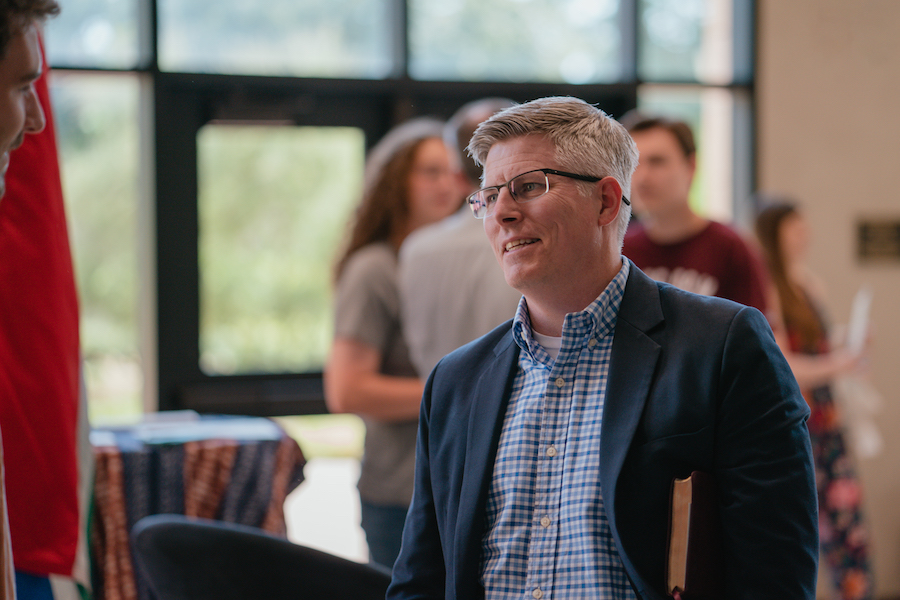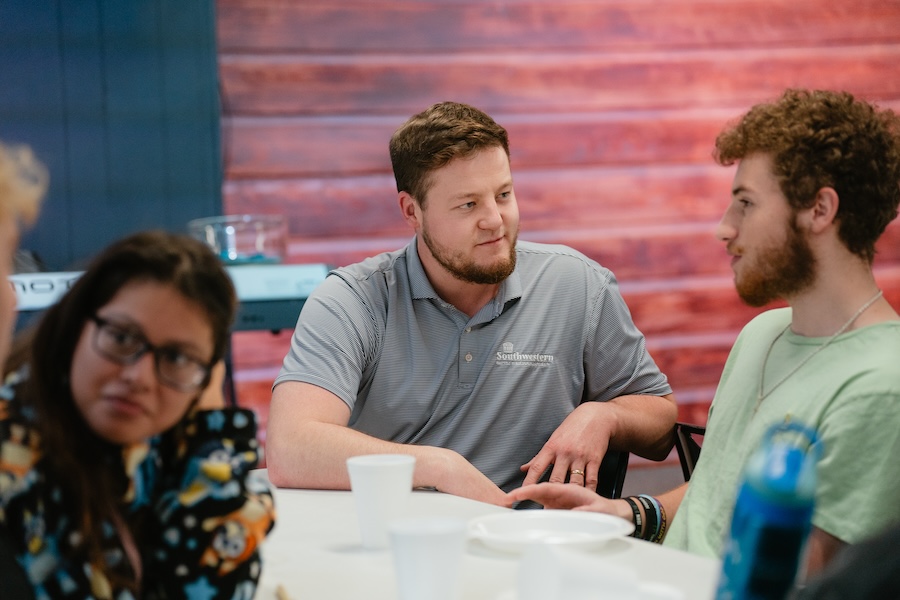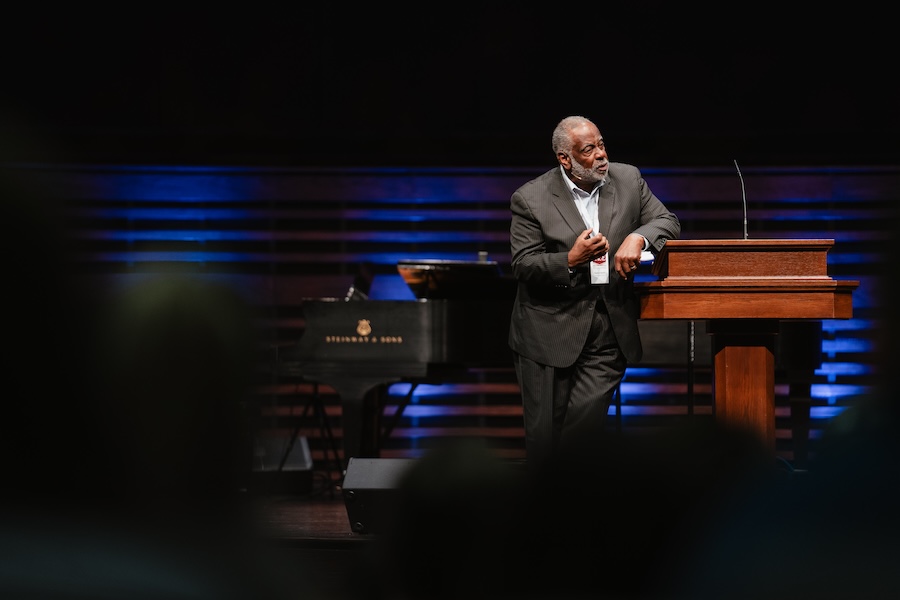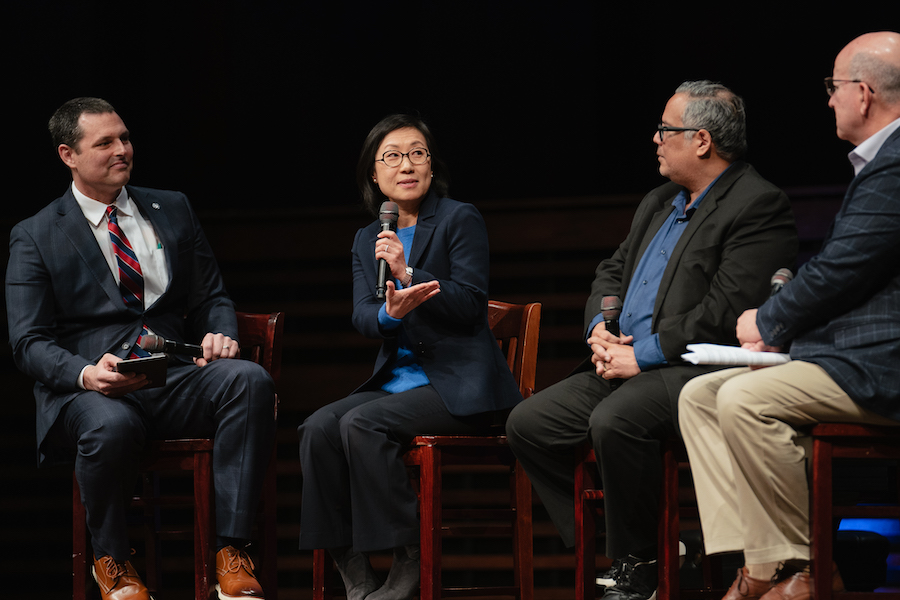Church training builds strong warriors for Christ
God is answering prayers for the youth ministry staff at North Richland Hills Baptist Church (NRHBC), where young soldiers for Christ are being trained, with much success, to evangelize in their community. On Sept. 29, 60 participants—about 40 students and 20 adults from NRHBC—attended a day-long training session, then took their message to nearby neighborhoods.
By the end of the day, they had collectively knocked on 249 doors, prayed with 41 people, and spoken with eight individuals who indicated that they wanted to know more about the Gospel. “But the goal wasn’t just to knock on doors,” says Dave Bryant, the church’s lead student minister and a Southwestern graduate (Master of Divinity, 2016). “The intent was to give our students the confidence to go forward and share Christ in their school.”
In planning the training, the NRHBC staff looked for a straightforward, visual way to express the Gospel. They settled on “the Three Circles,” a method by which people evangelize by drawing three simple circles that represent God’s perfect design, this sin-broken world, and the Good News of Jesus in order to communicate the overall Gospel message.
“It is the most organic presentation I’ve seen,” says Daniel Simmons, associate minister to students and an M.Div. student at Southwestern. “The Three Circles approach took away a lot of fear that the students might have had that comes from having a conversation with strangers.”
The NRHBC staff also incorporated 411 training—writing and answering four questions on one sheet of paper in one hour. Participants in the training learned answers to the questions of why disciples are called, with whom they should share the Gospel, what should be said when sharing, and what goals should be set regarding sharing with friends and family.
Chris Watkins, family/student minister at Cross Church, NRHBC’s satellite campus, says the Three Circles and 411 training methods facilitated training in a straightforward way, “taking it piece by piece so students could easily understand. Probably the biggest takeaway for me was how to share your story in 15 seconds, to bridge where you are now to a conversation about Jesus.”
Following the training, students and leaders ventured to nearby neighborhoods to share the Gospel door-to-door. Watkins recalls a student who was unsure “and then went to having a smile on his face, being able to share and have confidence. At the second apartment complex we approached, the kids were all saying, ‘I want to do it. I want to do it.’”
Bryant recalls a sixth-grade student who was initially hesitant to approach people. He remembers that the girl first approached a woman at her mailbox. The lady asked her, “Are you trying to get my mail?”
“But she responded really well,” Bryant says. “She asked the lady, ‘Is there anything we could pray for you for?’ They ended up praying for her and for several other people. She said, ‘I can do this now.’”
“It meant a lot knowing that these middle and high school students were able to take time out of their schedule to do this,” Watkins says. “I don’t know of any student who walked away not knowing how to share the Gospel or who didn’t learn something about themselves.”
“The students were asking us, ‘When can we do this again?’” Simmons says. “They were saying, ‘I can actually do this.’”



